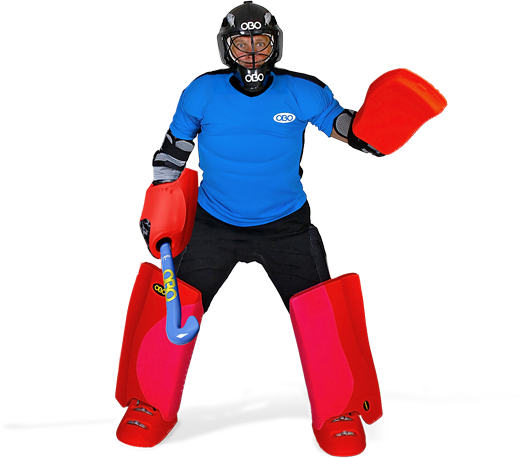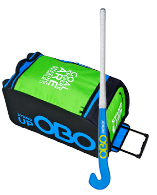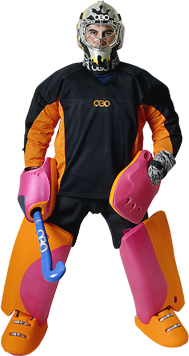KEEPERS RESOURCES

Training Programs
Last tip we talked a little about off-season conditioning and training. Since that time, I’ve gotten a lot of questions about specifics for a training program. They range from sprint workouts, to length of program to types of agility drills. First off, there is no perfect one size fits all training program for every keeper.
The best program for you is the one that addresses your weaknesses and builds strengths. That will depend on each individual’s athleticism. Having said that, there are general things you should look to build into your program at some level. In this tip, we’ll plot out a sample program, and highlight some drill areas, especially agilities.
Big time note here, this training program is hardly MY training program. It is a program I’ve compiled with lots of sources, thank you to all those who’ve shared ideas about training.
It usually takes eight to ten weeks for a training period to be effective. You’ve got to be diligent if you expect any pay off. Get a journal and keep your training times. Monitor what you eat and how you feel before and after workouts. It’s also good to keep track of your sleep time. A journal is a good way to build diligence in.
I like to have phases to my training, phase one will be aerobic; longer runs, fitness, probably three weeks. Phase two will be interval type work, lots of agilities, another three weeks. Phase three is all short sharp stuff, lots of sprints and agilities, three weeks.
In phase one, I’ll look to keep my runs to about 30-35 minutes constant. I like to run every day (therapeutically), but while training, you should run every other day to allow for recovery. I have three types of run, I mix in. One is a timed 5k, with a proper warm up and warm down (five minutes each side). The other is a 35 minute fartlek where I’m really concentrating on discernible changes of pace and how long I can maintain them. The third type is a hill repeater, usually a 1km loop with a hill built in. Something where you’ll have a consistent incline thrown in.
In phase two, my running is over 800m, 400m and 200m. If I use three workouts again, I mix them from a group. In the beginning, I like 800s. They’re not fun, but they’re effective. I try not to do more than 3,200m total in making a workout and I’ve got to build in proper recovery time. Workout 1: 2 x 800m, 80%, 3 minute recovery, 2 x 400m, 100% 90 second recovery. Workout 2: 6 x 400m, 80%, 90 second recovery, 4 x 200m, 100%, 30 second recovery. Workout 3: 2 x 400m, 90%, 90 second recovery, 8 x 200m, 100%, 45 second recovery.
Phase three is nothing more than a 100m at one time. I try to keep my workouts to no more than 2500m total. I’ll build longer recovery time in between sets of a distance. Workout 1: 4 x 100, 80%, 15 second recovery, one minute recovery, 8 x 50m, 100%, 20 second recovery, two minute recovery, 10 x 25m, 100%, ten second recovery. Workout 2: 2 x 100, 80%, 15 second recovery, one minute recovery, 12 x 50m, 20 second recovery, two minute recovery, 12 x 25m, 100%, 10 second recovery. Workout 3: Use agility drills.
And now on to agility drills. I talked a little bit about them in the last tip in terms of distances and guidelines for making your own drills. Here are a couple, I’ve begged/borrowed/made/fell into along the way.
I like to build my agilities along lines I would move in the circle in sequences that sort of make sense as to what might happen in a game. I try to mix changes in direction in while trying to reinforce angles by moving around the circle. Below are diagrammed out two patterns I like to use (#7 and #5). I’ll try to work the yardage out and build in proper recovery time. If I’ve got another keeper to run with, a good guideline is one second work, one second rest, so if an agility takes you 36 seconds, your rest is 36 seconds. You should have balance to your agilities, don’t always go in the same direction.
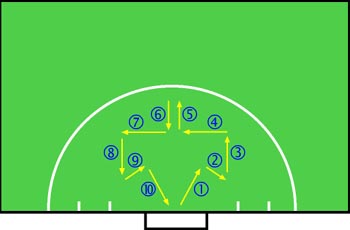
#7
Forwards:
1. sprint forward (5 yards)
2. side shuffle (3 yards)
3. sprint forward (5 yards)
4. side shuffle (5 yards)
5. sprint forward (3 yards)
6. back pedal (3 yards)
7. side shuffle (5 yards)
8. back pedal (5 yards)
9. side shuffle (3 yards)
10. back pedal (5 yards)
Reverse:
10. sprint forwards (5 yards)
9. side shuffle (3 yards)
8. sprint forwards (5 yards)
7. side shuffle (5 yards)
6. sprint forwards (3 yards)
5. back pedal (3 yards)
4. side shuffle (5 yards)
3. back pedal (5 yards)
2. side shuffle (3 yards)
1. back pedal (5 yards)

#5
Forwards:
1. sprint forward (8 yards)
2. back pedal (4 yards)
3. side shuffle (4 yards)
4. sprint forward (3 yards)
5. side shuffle (3 yards)
6. back pedal (3 yards)
7. side shuffle (4 yards)
8. sprint forward (4 yards)
9. back pedal (8 yards)
Reverse:
9. sprint forwards (3 yards)
8. back pedal (5 yards)
7. side shuffle (5 yards)
6. sprint forwards (3 yards)
5. side shuffle (3 yards)
4. back pedal (5 yards)
3. side shuffle (5 yards)
2. sprint forward (3 yards)
1. back pedal (5 yards)
I have a fun agility drill that I’ll do with a partner. It takes a goal and a ball. I start on the goal line at the center of the goal, I start to side shuffle to a post, once I get near the post, my partner who is three yards off the line, tosses a ball towards that post. I catch with the hand closest to the post, toss it back immediately to the partner, and start to shuffle to the opposite post. As soon as I get to the post, the feeder tosses, I catch, toss and immediately shuffle back to the other post. I repeat the process. I’m focusing on a couple of things. Keeping in my ready position as I move, I try to keep my body stable (not bobbing up and down as I move), watching the ball all the way in to my hand, pushing off my opposite leg to change direction when I make a catch, these are all things I want to do. I’ll do anywhere between 25 and 30 catches to a set. If I’m a feeder, I can mix up the level I’m throwing to so the catcher may have to jump to reach a ball. I can also do this drill so that the catcher has to come forward, catch, then back pedal, instead of going side to side.
Good luck,
Jon
e-mail Jon
Please note that OBO together with Jon O’Haire hold copyright over any material appearing on tips pages. We welcome the printing and distribution of these tips, provided that they are not sold, or used for financial gain. This paragraph must appear on all printed or distributed copies. The photographs above must not be used in any form without express permission from Jon O’Haire.
Comments
Leave Your Comments Below















